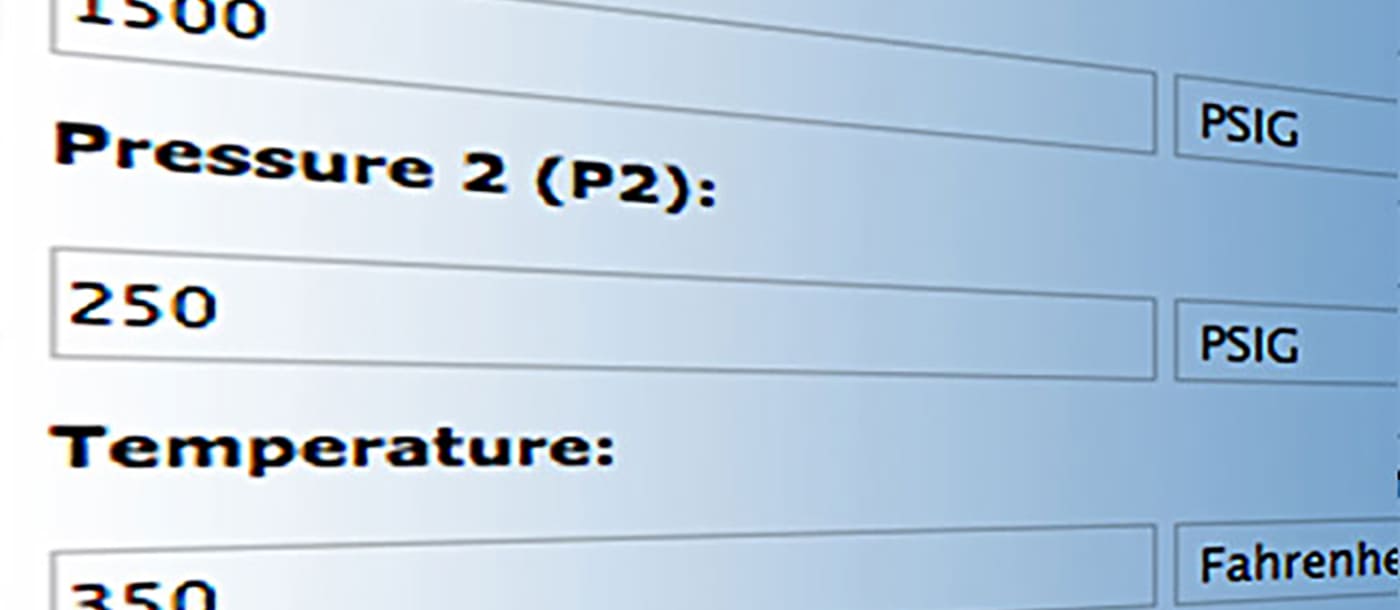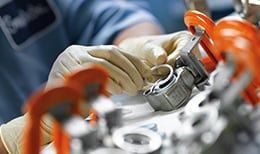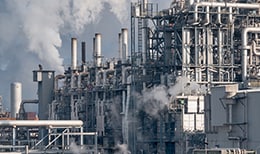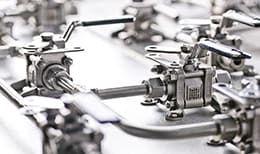
Swagelok® 모듈러 가스 시스템용 스프링 없는 다이어프램 밸브
DE 시리즈 모듈러 가스 시스템용 스프링 없는 다이어프램 밸브는 설치하기 쉽고, 유동 방향의 시각적 표시를 제공하며, 온도 안정성을 높여주는 시트 구조가 적용되었습니다.
추가 정보 요청Swagelok DE 시리즈 스프링 없는 다이어프램 밸브는 모듈러 고순도 가스 공급 시스템에서 손쉬운 설치, 신뢰할 수 있는 성능, 탁월한 순도를 제공하도록 설계되었습니다.
주요 특징:
- 밸브 몸체가 316L VIM-VAR 스테인리스강으로 제조되어 높은 내식성을 보장하며 초고순도 표준을 유지합니다
- 1.125인치 C-씰 또는 W-씰 모듈러 가스 시스템과 매끄럽게 통합되도록 설계되었습니다
- 완전 밀폐 PFA 시트가 오염을 방지하여 순도를 높여주며 핵심 애플리케이션에서 개선된 온도 안정성을 제공합니다
- 다양한 시스템 요구 조건을 충족할 수 있도록 2-포트 및 3-포트 구성으로 공급 가능합니다
- 공압식 및 수동 작동 옵션으로 공급 가능하므로, 작동 유연성을 제공하는 동시에 컴팩트한 점유 공간을 유지할 수 있습니다
- 액추에이터가 밸브 몸체에 상대적인 방향에 고정되어 있으므로 일관적인 설치가 보장되며 정렬 오류의 가능성이 최소화됩니다
- 밸브 몸체 바깥쪽에 있는 모서리 챔퍼가 유량 방향의 명확한 시각적 표시를 제공하므로 설치와 시스템 설정에 도움이 됩니다
사양
| 사용 압력 | 진공~125 psig(8.6 bar) |
| 파열 압력 | >3200 psig(220 bar) |
| 작동 압력 | 평상시 닫힘: 60~120 psig(4.1~8.2 bar) 수동 일체형 록아웃(Lockout) 재정의가 포함된 평상시 열림 및 평상시 닫힘: 60~psig(4.1~6.2 bar) |
| 온도 | –10°~65°C(14°~150°F) |
| 유량 계수 | 0.3 |
| 몸체 재질 | 316L VIM-VAR 스테인리스강 |
| 다이어프램 재질 | 코발트 초합금 |
| 연결구 | 종류: 1.125인치 모듈 조립형(MSM) 구성: 2-포트 및 3-포트 |
스프링 없는 다이어프램 밸브 카탈로그
구성 재질, 압력 및 온도 등급, 옵션, 액세서리를 포함한 자세한 제품 정보를 찾을 수 있습니다.
Features: 1.125 in. C-seal and W-seal designs; Available in two- and three-port configurations; Compact pneumatic and manual actuators; Pneumatic actuator indicator ball: red for normally closed, green for normally open; Fixed orientation of actuator to body for consistency of installation; Corner chamfers on outlet side of body for visual indication of flow direction

고객별 맞춤 선별 Swagelok 리소스

산업용 유체 시스템에 적합한 밸브를 선정하는 방법
산업용 유체 혹은 샘플링 시스템 설계 애플리케이션에 가장 적합한 밸브를 선정할 때 유용한 STAMPED 방법을 어떻게 적용하는지 소개합니다.

누출 저감(Low-E) 밸브로 비산 누출 비용 최소화
비산 누출은 화학 및 정유 산업에서 점점 더 큰 문제로 대두되고 있습니다. 인증 받은 누출 저감(Low-E) 밸브를 사용하면 시설과 수익성을 보호할 수 있습니다. 이 게시글에서 누출 저감 밸브가 무엇인지, 어떤 테스트를 거치는지, 플랜트에 어떻게 도움이 되는지 알아보십시오.

블록 밸브로 산업용 유체 시스템을 격리하는 방법
플랜트 안전을 유지하려면 유지보수 작업 전에 산업용 유체 시스템 라인을 격리하는 것이 필수입니다. 유체 시스템 라인을 격리하는 가장 안전한 방법은 블록 밸브 두 개를 설치하는 것입니다. 시스템에 적합한 구성을 설계하는 방법을 알아보십시오.

하나의 새로운 밸브, 반도체 제조 기술을 바꿀 수 있는 세 가지 이유
혁신적인 최신 원자층 증착(ALD, Atomic Layer Deposition) 밸브 기술이 어떻게 첨단 기술 반도체 제조 시장을 변화시킬 수 있는지 소개합니다.
